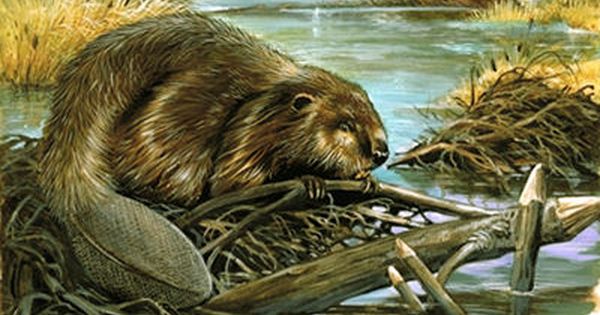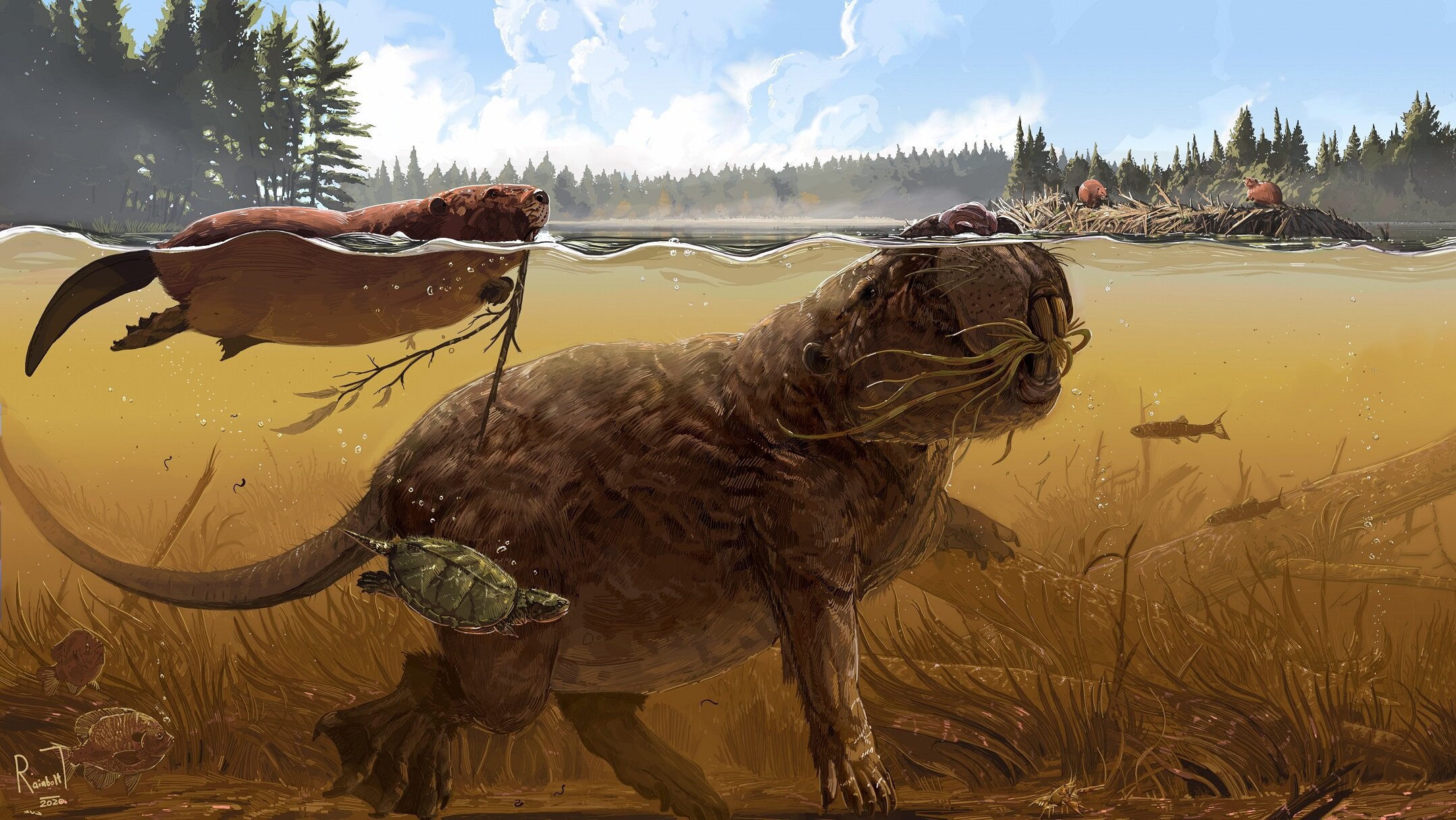Beaver
| Type | Common Beaver | Castoroides |
| Species | rodent | |
| No. Appearing | 2-20 | 2-12 |
| Behaviour | social lodge | |
| Range | taiga, woodland | |
| Size | 24 in. long | 7 ft. long |
| Weight | 55 lbs. | 250 lbs. |
| Intelligence | 1 | 3 |
| Armour Class | 7 | 6 |
| Hit Dice | 1 | 4 |
| Action Points | 4 | 4 |
| Max. Stride | 3 | 5 |
| THAC0 | 20 | 18 |
| Hp/Die | d4 | d8 |
| Attack Form | bite | bite & bite |
| Damage | 1-6 | 1-6 & 3-12 |
| Special Attack | tail slap | |
Beavers are nocturnal, semi-aquatic rodents known for building dams, canals and lodges. They choose a well-watered area in which to settle, altering the landscape, creating large ponds and canals by cut trees, inundating the bottomland and creatin ga large lake. This behaviour makes passage through beaver-occupied lands very difficult and frustrating.
Common Beaver
Possessing stout bodies with large heads, chisel-like incisors, brown or gray fur, hand-like front feet, webbed back feet and a flat, scaly tail, beavers are very well adapted for a mixed land-and-water environment. Their ponds tend to be 10 to 12 feet deep and hundreds of feet across. Families consist of an adult male and female, along with their kits and yearlings. Offspring may continue to serve the same beaver pond as their parents, or may build adjoining ponds that share water sources. Whole beaver "towns" may form if undisturbed, covering areas up to two miles across.
Common beavers aren't aggressive. Encountered out of water, they will make a stand and be quite dangerous; but unless cornered, they will give ground and seek the water at first opportunity.
Defenses
If in water when encountered, the beaver will slap its tail on the water. This creates a loud, hollow sound as it hits the water, calling warning to every other beaver in the pond. Because beavers are nearly invisible in the brush, and are sure to see a character tramping through the trees before they're seen, it's nearly impossible to surprise them. Moreover, the beaver's excellent swimming ability enables it to swim 3 hexes per action point. Their lodge can only be accessed from below the waterline, through a vertical doorway. accessible through an underwater doorway.
Local trappers and hermits will count on beavers to give warning if some other stranger or monster enters an area — as beavers will grow used to humanoids they see every day. Trappers settle in areas and set up traps, as beaver pelts are valuable; but skilled trappers are careful to take only one skin per beaver family.
Castoroides
Unlike their smaller kin, this giant beaver can be very aggressive, even during the day. The tail slap produced by a Castoroides is loud enough to break a spellcaster's concentration (ruining a spell), and to cause deafness for 1–4 rounds to anyone within 2 hexes, after failing a save against magic. Once the tail slap is heard, other giant beavers in the pond will move towards the slap and aggressively attack any invaders they find.
Sources that claim some beavers have a high intelligence are unsubstantiated. Beavers have not been found that wear clothes, exhibit a high education or that trade goods with outsiders.
See Bestiary

